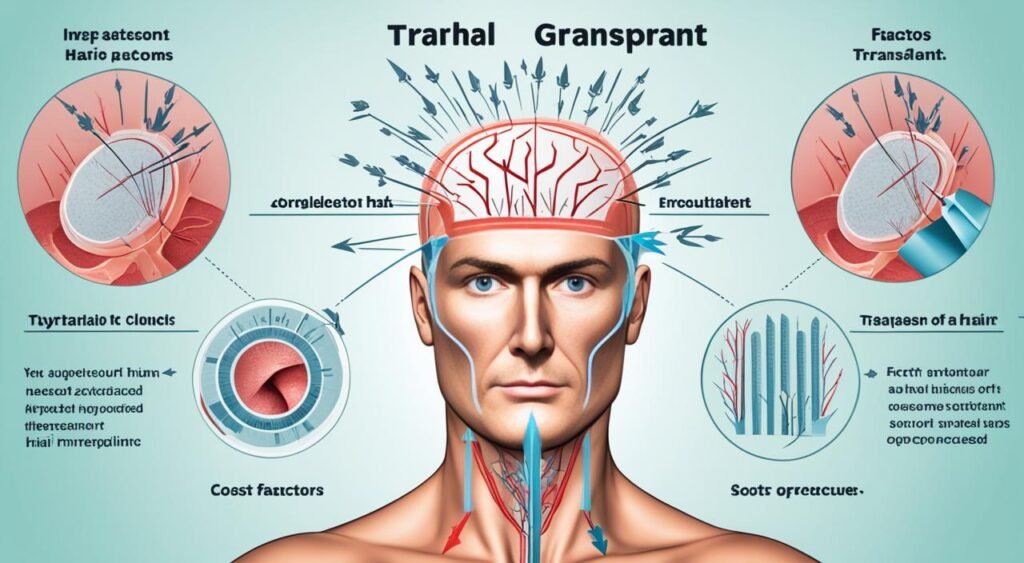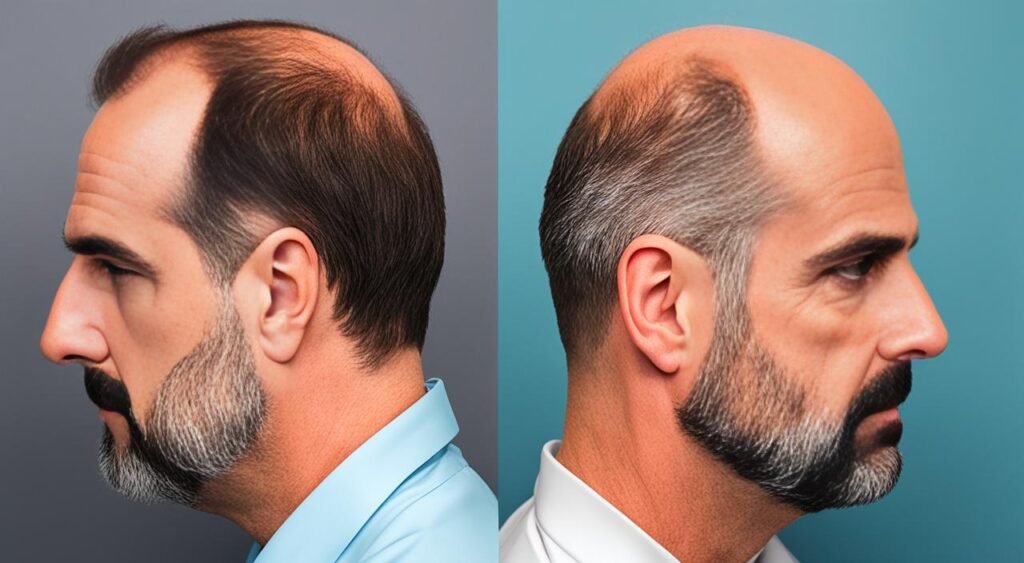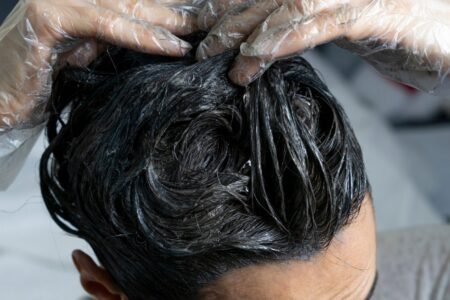“In investing, what is comfortable is rarely profitable.” The words of renowned investor Robert Arnott resonate beyond the world of finance and into the realm of personal health and beauty—where the pursuit of comfort in one’s skin may come at a notable price. When it comes to hair restoration, understanding the hair transplant cost can often feel like navigating through a complex investment portfolio.
As you embark on this journey to reclaim not just your hair, but your confidence, it’s crucial to become well-versed in the hair restoration pricing landscape. Cost of hair transplant surgery doesn’t just influence your wallet but also impacts the quality of results and your overall satisfaction. Therefore, this article aims to guide you through every financial facet of the hair transplant process.
Whether it’s your first time considering such a procedure or you’re revisiting the options available, this comprehensive overview will provide you with the knowledge to make an informed decision. From initial consultations to final follow-ups, you’ll gain insight into what to expect financially from one of the most sought-after cosmetic surgeries today.
What Determines Hair Transplant Cost?
When you’re exploring the possibility of a hair transplant, you’ll quickly notice that prices vary significantly. Several key hair transplant cost factors will influence the final price you’ll pay. To help you understand what contributes to hair transplant prices, let’s delve into the primary components that determine the average cost of a hair transplant.
The Complexity of Your Hair Loss
The scope and pattern of your hair loss are significant cost determiners. Generally, the Norwood Scale is used to assess the stage of male pattern baldness, with a higher stage indicating more extensive hair loss, which in turn may require more grafts and thus a higher cost for transplantation.
Techniques Used During Surgery
Traditional FUT (Follicular Unit Transplantation), which involves removing a strip of scalp, typically carries a different price tag compared to the FUE (Follicular Unit Extraction) method, where individual follicles are removed one at a time. Robotic hair restoration, a cutting-edge technique offering precision and speed, might increase the cost due to the technology used. The chosen method not only affects the complexity and duration of the procedure but also impacts the healing process and final outcome.
Experience and Reputation of the Surgeon
Credentialed surgeons with a wealth of experience and a track record of successful transplants can command higher fees. This is often a reflection of their expertise, which can provide peace of mind and better results – factors that can justify the investment in your appearance and self-confidence.
| Surgical Technique | Complexity | Reputation of Surgeon |
|---|---|---|
| FUT | Less complex, potentially more scars | Varies greatly |
| FUE | More complex, less scarring | Varies greatly |
| Robotic Hair Restoration | High complexity, high precision | Typically high due to advanced technology |
When considering the various hair transplant cost factors, remember the long-term value of choosing the right technique and surgeon for your needs. It’s not just about the up-front hair transplant prices, but also the cost-effectiveness and satisfaction with the average cost of hair transplant over time.
Comparing FUT and FUE: Hair Transplant Prices
When exploring hair restoration options, you’ll undoubtedly come across FUT vs. FUE, two primary hair transplant techniques. The decision between Follicular Unit Transplantation (FUT) and Follicular Unit Extraction (FUE) is multifaceted, involving not just outcomes but also hair transplant cost comparison. So, let’s delve into the pricing guide that might help you navigate through your hair restoration journey.
The traditional FUT procedure, often known as “the strip method,” includes removing a strip of scalp from the donor area and dividing it into individual grafts. Conversely, FUE involves extracting individual hair follicles directly from the donor site to the recipient area. The differences in procedure intricacies understandably lead to variances in pricing. Below is a table highlighting the fundamental cost differentials between FUT and FUE based on various aspects of the transplant process.
| Cost Factor | FUT | FUE |
|---|---|---|
| Number of Grafts | More grafts in a single session | Fewer grafts per session |
| Duration of Surgery | Shorter, thus potentially less expensive | Longer sessions or multiple sessions |
| Recovery Period | Longer recovery due to stitches | Shorter and less noticeable scars |
| Advancements in Technique | Traditional method with consistent results | Innovations like robotics are enhancing efficacy |
It’s important to note that while FUT might be less expensive due to its ability to transplant a large number of grafts in a single session, the hair transplant pricing guide is not just about upfront costs. As FUE does not require a scalpel or sutures, the minimal scarring and reduced recovery time might justify the typically higher price point for many patients.
Keep these factors in mind as we further delve into hair transplant cost comparison. The right option for you will hinge on balancing the physical, emotional, and financial aspects of the procedure. A consultation with a hair restoration specialist can provide you with tailored information to aid your decision-making process.
Breakdown of Hair Restoration Pricing
When it comes to hair restoration, understanding the full scope of investment is essential in making an informed decision. This section delves into the various costs associated with the hair transplant process, providing you with a comprehensive hair transplant cost breakdown.
Pre-Operative Assessments
Before the actual procedure, a series of vital pre-operative assessments come into play. These assessments include initial consultations, which may involve in-depth scalp analysis and outlining a treatment plan tailored to your needs, and diagnostic tests to ensure you’re a suitable candidate for surgery. Together, these contribute to the overall hair restoration pricing.
Cost of the Procedure Itself
The price tag of the hair transplant is influenced by a myriad of factors. Clinics typically formulate the cost by considering labor, the sophistication of the equipment used, and operational facility costs. While searching for an affordable hair transplant cost, it’s important to also weigh in the technology and techniques that will best meet your hair restoration goals.
Post-Operative Care Expenses
After the surgery, the financial commitment doesn’t end. Post-operative care, which includes medication, follow-up visits, and possible additional treatments to promote healing, all add to hair transplant cost breakdown. Understanding these costs upfront can help you budget for your entire hair restoration journey.
Furthermore, here’s an indicative table that breaks down potential costs you might incur at each stage:
| Cost Category | Description | Estimated Cost |
|---|---|---|
| Initial Consultation | Meeting with a specialist to discuss your hair restoration options and plan. | $100 – $500 |
| Diagnostic Tests | Tests required to determine the best surgical approach for your case. | $100 – $300 |
| Surgical Procedure | The actual hair transplant surgery, which varies greatly depending on technique and extent of treatment. | $3,000 – $15,000 |
| Post-Operative Care | Medications, special shampoos, follow-up visits, and other necessary aftercare. | $100 – $1,000 |
Keeping the above figures in mind, a comprehensive approach can ensure you’re not caught off guard by hidden fees. Always ask for a detailed hair transplant cost breakdown from prospective clinics, allowing you to compare and choose the most affordable hair transplant cost, without compromising on quality and efficacy.

Average Cost of Hair Transplant Across Different Countries
When exploring the hair transplant cost comparison on a global scale, you’ll discover significant variations that hinge on a myriad of factors. The average cost of hair transplant procedures can differ widely from one country to the next, influenced by medical tourism trends, currency exchange rates, and the economic climate of each geographic location. It’s crucial for you to weigh the potential savings against the caliber of care and the expertise of surgeons available abroad.
To give you a clearer picture, let’s delve into a comparison of countries that are frequently sought after for their affordable hair transplant costs. This juxtaposition isn’t just about finding the cheapest option; it’s about understanding what you’re getting for your money in terms of quality and safety.
| Country | Average Cost | Healthcare Standards | Surgeon Expertise |
|---|---|---|---|
| United States | $4,000 – $15,000 | Premium | Highly Experienced |
| Turkey | $1,500 – $4,000 | Variable | Mixed Experience |
| India | $600 – $2,000 | Variable to High | Moderate to High Experience |
| South Korea | $3,000 – $6,000 | High | Very Experienced |
| Brazil | $2,000 – $5,000 | High | Highly Experienced |
As indicated in the table, there’s a substantial price range that should be assessed further than just numbers. For instance, while Turkey offers some of the most affordable hair transplant costs, the healthcare standards and surgeon expertise may vary, making it vital for you to conduct thorough research before making a decision.
Taking the plunge for a hair transplant involves more than just assessing upfront costs; it’s an investment in your appearance, confidence, and quality of life. Therefore, it is essential you assess the long-term benefits and potential risks before selecting the right path for you. Striking that perfect balance between cost, quality, and safety will serve your best interests now and in the future.
The Long-Term Value of Hair Transplant Surgery
When considering hair restoration, it’s essential to weigh the long-term benefits and value of a hair transplant against the upfront hair transplant cost factors. As opposed to temporary solutions, the cost of hair transplant surgery is a one-time investment in your appearance and self-confidence. Let’s delve deeper into how this cost compares to other hair loss treatments and the enduring nature of hair transplantation.
Comparing to Other Hair Loss Treatments
It may surprise you to learn that when compared to other hair loss treatments, investing in a hair restoration pricing plan for surgery can be more cost-effective in the long run. Non-surgical treatments like minoxidil or finasteride often require ongoing, repetitive expense, potentially leading to a higher cumulative cost over time without the promise of permanent results.
Consideration of Results Durability
The durability of hair transplant results is one of the main reasons patients opt for surgery despite the initially higher cost. In contrast to non-surgical treatments that need continuous application or consumption, hair transplants offer a sense of permanence. Once the transplant is successful, those new grafts are there to stay, eliminating the need for repetitive treatments and allowing a cost calculation that is finite and more predictable. Ultimately, the hair restoration pricing reflects not just the procedure but the enduring benefits it offers.
Hair Transplant Cost Factors and How to Budget for Them
When considering a hair transplant, understanding the hair transplant cost factors is crucial for setting a realistic budget. To demystify hair transplant pricing guide basics, let’s delve into the primary cost determinants you’ll encounter. Firstly, the number of grafts you require will anchor the overall price—this number varies based on the extent of hair loss and desired thickness. Similarly, the surgical technique selected, whether FUT or FUE, influences cost due to differing labor and time intensities. Lastly, ancillary expenses, such as travel, accommodation for out-of-town procedures, and any necessary aftercare supplies, can add up. Properly budgeting for a hair transplant ensures no surprises on your journey to hair restoration.

To aid your financial planning, consider the following scaffold for a basic hair transplant budget:
| Expense Category | Description | Cost Estimate |
|---|---|---|
| Number of Grafts | Depending on hair loss severity; more grafts lead to a higher price | Variable |
| Surgical Technique | FUT might be less expensive than FUE, but each has its merits | Variable |
| Ancillary Expenses | Includes travel, accommodations, and post-operative care supplies | Variable |
While budgeting, it’s also key to account for quality and experience over cost-cutting alone. A hair transplant is a considerable personal investment, and your well-being should remain the priority. As such, comprehensive research and consultations with reputable surgeons should be integral to your financial blueprint. Remember, the initial outlay for a quality hair transplant can offset long-term expenses associated with less permanent hair loss treatments.
Affordable Hair Transplant Cost vs. Quality of Service
When you’re considering a hair transplant, it’s crucial to weigh the potential costs against the standards of service you expect. The allure of an affordable hair transplant cost may be tempting, but it’s important to understand the trade-offs that might come with a lower price tag. Quality should never take a backseat because the success of your procedure hinges on the expertise and care provided.
Understanding the Trade-Offs
Finding a balance between hair transplant prices and the quality of service can be challenging. Cheap options might indicate less experienced surgeons, lower-quality facilities, or outdated techniques that can lead to unsatisfactory results or potentially higher costs in the long term due to revisions or complications. It’s crucial to evaluate the hair transplant cost comparison with a discerning eye towards the reputation and transparency of the clinic and surgeon.
How to Find Value for Money
In your quest for affordable hair transplant cost without compromising on quality, start by researching reputable clinics. Read patient reviews, check before and after photos, and assess the surgeon’s credentials. Below is a table to help you compare important factors between clinics:
| Clinic | Price Range | Surgeon’s Experience | Technique Offered | Patient Satisfaction Score |
|---|---|---|---|---|
| Clinic A | $4,000 – $10,000 | 10+ years | FUT and FUE | 95% |
| Clinic B | $3,500 – $8,500 | 15+ years | FUE | 90% |
| Clinic C | $6,000 – $12,000 | 20+ years | Robotic FUE | 98% |
Questions to ask during consultation include the expected number of grafts, what is included in the price, and the policies around post-operative care or complications. Don’t hesitate to ask about the technology used and whether any additional fees may be incurred. An informed decision is a smart decision, and considering all aspects of the hair transplant cost comparison will ensure you find a solution that delivers value and satisfaction.
Insurance and Hair Restoration: What You Need to Know
When considering hair transplant surgery, understanding the nexus between hair transplant prices and insurance coverage is crucial. While most consider hair transplant a cosmetic procedure typically not covered by insurance, there are scenarios where you might find yourself eligible for some cost coverage.
Firstly, if hair loss is due to an accident, a medical condition, or a treatment that is covered by your insurance, there’s a possibility to claim some benefits for a hair restoration procedure. However, obtaining coverage for cost of hair transplant surgery under insurance requires thorough documentation and often a strong medical rationale justifying the necessity of the procedure beyond aesthetic enhancement.
- Review your insurance policy in detail, looking for any clauses that might suggest exceptions for coverage.
- Consult with your medical practitioner or a dermatologist to get a professional opinion that supports your claim for a medical necessity.
- Prepare a detailed case with medical records, photographs, and doctor recommendations for hair transplant surgery.
If your initial claim gets rejected, don’t be disheartened. Many have successfully appealed by providing additional evidence of the emotional and psychological impact of hair loss. Remember that persistence and a well-structured appeal can sometimes turn the tide in your favor.
It’s vital to approach this with realistic expectations, knowing that hair transplant cost coverage can be an uphill battle with insurance companies that usually view it as elective. For accurate and current information on what to expect for hair transplant prices and the potential for insurance assistance, direct consultation with both insurance advisors and hair transplant professionals is advisable.
Hair Transplant Pricing Guide: How Many Grafts Do You Need?
Embarking on the journey of hair restoration? Understanding how to navigate the hair transplant pricing guide is key to setting realistic expectations for your procedure. The number of grafts you require is a pivotal factor that will shape the total cost of your hair transplant. We’ll delve into evaluating this crucial aspect and provide tips on managing the expense tied to it.
Estimating Graft Requirements
To determine hair transplant prices, first, assess the extent of hair loss you’re experiencing. A detailed examination usually involves analysis based on the Norwood Scale, which categorizes various stages of baldness. Alongside the clinical assessment, your personal goals for density and coverage play a significant role. Your unique hair characteristics—such as texture, color, and thickness—may influence the total graft count needed to achieve your desired look.
Navigating Pricing per Graft
When it comes to hair transplant cost per graft, clinics may vary greatly in their pricing structures. A clear comprehension of these rates is vital for you to avoid any hidden surprises. Standard practice in the industry often involves a tiered pricing model, where the cost per graft decreases as the number of grafts increases. Approach this conversation with transparency and seek a thorough breakdown of costs to ensure that your investment meets your expectations for aesthetic results and financial planning.
In your mission of determining hair transplant prices, a blend of strategic planning, and informed decision-making will ease your journey. Remember, investing in hair restoration is not just about the immediate expenses but also the long-term value of a restored appearance and renewed confidence.










